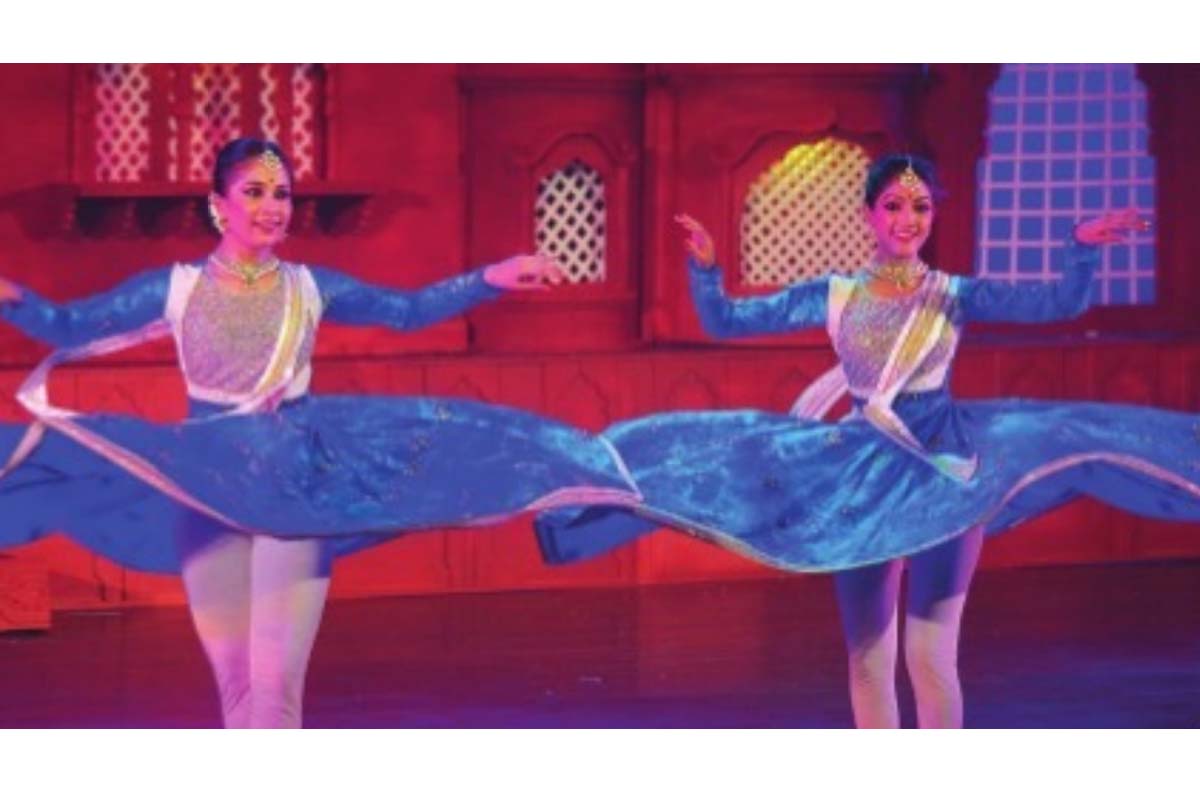Sri Ram Mādhurya: A unique Kathak-Katha-Kutcheri by Sunil Sunkara & Vanitha Suresh
Brahma Gana Sabha witnessed the premiere of “Sri Ram Mādhurya” on 3 January this year, during their Marghazi Dance Festival.
Samyutha, a Kathak recital in Bangalore, was a treat to the eye as a versatile dancing duo gave their debut performance.

(Photo: SNS)
Abhinava Dance Company, Bengaluru and Guru Ashok Kumar and family jointly presented Samyutha, the debut Kathak performance by Aditi Ashok and Spurthi Ashok, the dynamic disciples of Guru Nirupama Rajendra and Guru T D Rajendra at the Dayananda Sagar College Auditorium, Bengaluru. The gifted daughters of the renowned Bharatanatyam Guru Ashok Kumar, the founder director of Natyanjali, renowned also for training visually impaired students by “touch and feel” technique, Aditi and Spurthi are also trained in Bharatanatyam under his tutelage.
The versatile duo is not just proficient in Kathak and Bharatnatyam but equally adept in Carnatic classical vocal too. Aditi is honoured with Kalashree, the State Award for young achievers and Spurthi, the younger one, has represented Karnataka for the National Award Balashree and has received the CCRT scholarship for dance from the Union government. Frequent performers as the graded artists of the Doordarshan, both have toured far and wide with the Natyanjali ensemble too.
Advertisement
Flowered into brilliant Kathak exponents, Sanyutha, their Kathak Manch-Pravesh this evening was such a treat that it was difficult to believe this was their debut performance. The repertoire, comprising Shiva Stuti, Tulsidas Bhajan, Taal, Meera and Tarana, was conceived in a manner that every nuance of this classical dance form, from Nritta to Nritya and Abhinaya, was showcased through exquisite intra-forms. The live orchestra, led by Guru Nirupama Rajendra herself, introducing each item in her own poetic lucid way and also doing crisp Padhant, comprised the choicest of musicians in Ud Faiyaz Khan and Pallavi Arun on vocals, Praveen D Rao on the Tabla, Gurumurthy Vaidya on Pakhawaj, Sarfaraaz Khan on Sarangi, Shakthidhar on Flute and Shruthi Kamath on Sitar. The stage decor and set, influenced by the Hindu and Mughal architecture, caught the eyes, the moment one entered the hall. Since Guru Nirupama and Rajendra themselves, trained under stalwarts like Kumudini Lakhia and Maya Rao, carry forward the legacy of both Lucknow and Jaipur Gharanas; it represented both. Samyutha, the exhilerating performance, took a flying start with the invocatory “Shiva Panchakshar Stotra”, written by Adi Shankaracharya and very thoughtfully composed by Faiyaz Khan in raga Shankara set to Jhaptala.
Advertisement
The Uthaan of Tabla and Pakhawaj together, created the perfect ambience for Sanyutha, the spirited duet by the energetic duo, translating each and every attribute of Shiva through hand gestures and powerful Nrittapassages. It also incorporated two Sancharis. The first depicted an agitated mother Parvati, cross with the mischievous kids Ganesh and Muruga, being cajoled back to her loving smile by Shiva and another Sanchari, where Shiva dresses as a hunter to fight Arjun in the forest to ultimately bestow his Pinak Dhanushto him as a reward. The TodeTukde of Kathak were imaginatively woven into the choreography depicting the aggressive fight between Arjuna and Shiva.
The popular Bhajan of Tulsidas “Shri Ram Chandra Kripalu bhajman…” in Yaman Kalyan set to seven beats cycle of Rupak Tala, had the Chaupaies(wrongly mentioned as Dohas) were used as the Kavittaof Kathak in Sita-Swayamvaraand the Ram-Ravan Yuddha. Nirupama mentioned that this was based on the original choreography of her Guru Maya Rao. Taalfocused on Nritta, the rhythmic aspect of Kathak, where the duo explored Teentala in slow, medium and fast tempos through the gradual acceleration of Tatkar, the footwork, the delicate grace of Thaat, Paran Aamad“Dhatak thunga…” of Lucknow and the Tripalli Aamad of Jaipur, Chakkardar Tukde, Tihai, Paran and much more from traditional Kathak. The lyrical beauty of pure Nritta combining grace with exactitude of rhythm and line, was remarkable.
Absolutely fresh Abhinaya came forth in their solos on Meera Padas because it concerned the feelings of individual artiste. If “Mhan Mohini roop lubhani…” performed by Spurthi saw a Mugdha Nayika shyly thinking of her beloved Krishna, imagining herself absorbed in enjoying his melodious flute; the other Meera Pada, a solo by Aditi, depicted the fulfilled joy of a Swadheenpatika, or PragalbhaNayika, rejoicing the idyllic time spent together with the beloved. The imaginative use of Gat-Nikas and Gat-Bhava added delicate charm to the captivating choreography. With more performance experiences the duo is bound to evolve in the subtleties of Abhinaya too.
The concluding Tarana, the famous composition of Pt Ravi Shankar, was extremely delightful because it was performed on live music interspersed with scintillating TodeTukdeet al, as an added attraction. There was that exquisite stamp of their Guru’s demeanour and Abhinava approach to Kathak all through, but surprisingly the concluding 27 Chakkar (pirouettes) performed with exuberant energy; missed the assertive articulation of the ultimate “Sam”.
Advertisement